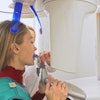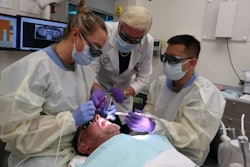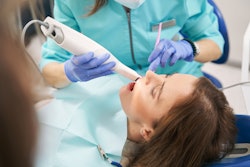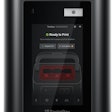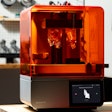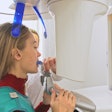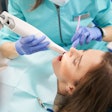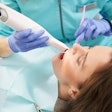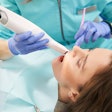
In the dynamic world of dentistry, technological advancements are revolutionizing the way procedures are performed. Among these innovations, dental lasers have emerged as a transformative tool, enabling dentists to execute procedures traditionally performed via scalpel with greater precision, efficiency, and patient comfort.
However, despite the clinical prowess delivered by laser technology, many dental practitioners find themselves facing a perplexing dilemma: their laser proficiency doesn't necessarily translate to increased patient treatment acceptance. Why is that?
One of the main reasons is that the dental team's patient communications process is missing the visual component that helps patients fully understand the laser treatment being recommended and makes them more likely to say yes. In this article, I delve into three important ways intraoral cameras, such as those from MouthWatch, can provide the visual input that can effectively boost patient acceptance of laser procedures.
Bridging the communications gap
Dentists across the globe invest considerable time and resources in mastering laser techniques, which is driven by the desire to enhance patient care and outcomes. Yet, despite their expertise in performing procedures more conservatively, which leads to a more pleasant experience and faster healing, dentists are often frustrated when patients hesitate to proceed with recommended laser treatments.
While cost may seem like the obvious culprit, a deeper examination reveals a more nuanced issue at play -- the communication gap between dentists and patients. Drawing from insights gained through extensive experience in dental coaching and neurolinguistic programming training, it becomes evident that effective communication lies at the heart of patient enrollment in treatment plans.
By understanding and leveraging the visual-audio-kinesthetic (VAK) communication model, dentists can tailor their communication approach to resonate with patients on multiple sensory levels (especially visual), thereby increasing treatment acceptance rates. Intraoral cameras can play an important role in the VAK approach to patient communication.
Fighting the fear factor
The research firm Focus Evolution conducted a comprehensive study and reported that 60% of the people in the U.S. do not see a dentist for regular scheduled dental care. And of the 40% who do visit the dentist, 83% are nervous and anxious.
If you take a patient's blood pressure, I think you will find this to be very common and magnified in dental offices. The phenomenon is commonly known as "white coat syndrome." It does not mean the patient dislikes you.
On the contrary, they value you and your team tremendously because they still show up to your office despite being nervous. But the fear factor challenge is daunting because of three main factors.
One, people who are anxious, nervous, or in fight-or-flight mode do not make good decisions. The hypothesis of somatic markers, in summary, states this.
Two, the fear factor is the main reason why it takes five to 12 mentions of proposed care for patients to say yes to what dentists advise. I believe the number of mentions can be dramatically reduced when intraoral photos are used to explain the need for treatment. Therefore, when you're discussing potential laser treatment with a patient, you must first acknowledge they are in a place of anxiety and communicate with empathy and emotion and not just present the facts to get them to feel at ease. Remember this: People will forget what you say, but they always remember how you make them feel.
Three, when presenting the facts, you must show, not just tell. That's because most people, especially in North America, are dominantly visual, compared to audio and kinesthetic learners on the VAK continuum.
Think about this: If you attended a lecture and there were no images, do you think you would comprehend the key points of the lecture and fully understand the concept? This is the heart of the common phrase "A picture is worth a thousand words" and why intraoral photos can speak volumes. When you use intraoral images to show a patient what is wrong and what the end result will look like, you will see your laser procedure case acceptance increase significantly.
Flipping the script
As dental professionals, we need to shift beyond assuming that financial considerations are the main reason why patients don’t accept recommended treatment. In fact, successful treatment plan enrollment hinges on addressing broader concerns and perceptions surrounding dental procedures.
If you reframe discussions away from mere monetary transactions and perceived pain and shift the conversation to the long-term benefits demonstrated visually, your patients will better comprehend the necessity of your recommended treatment plan with the result being quicker treatment acceptance without regret or remorse.
This can be achieved by prioritizing effective communication strategies and integrating intraoral cameras into daily practice. In this way, dentists can not only enhance patient engagement but also elevate the standard of care they provide.
Conclusion
Communication is not only about using words to convey information. Intraoral cameras serve as invaluable tools in bridging the communication gap between dentists and patients, facilitating a deeper understanding and appreciation of all recommended treatment plans, not just those involving laser technology. The result? Dental practices can unlock new avenues for growth, prosperity, and, ultimately, superior patient care.
Nick Clausen is the founder and owner of Dental Laser Coaching; director of Laser Mastery, a division of Fortune; and a member of the Academy of Laser Dentistry. Clausen previously served as vice president of sales and marketing for PIPStek (currently owned by Sonendo),vice president of sales and marketing for Implant Logistics, and was the North America director of sales and marketing for HOYA ConBio's dental division. He can be reached at [email protected].
The comments and observations expressed herein do not necessarily reflect the opinions of DrBicuspid.com, nor should they be construed as an endorsement or admonishment of any particular idea, vendor, or organization.



